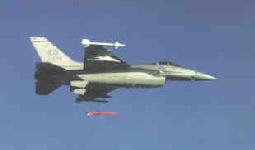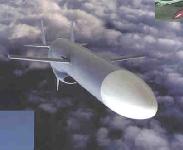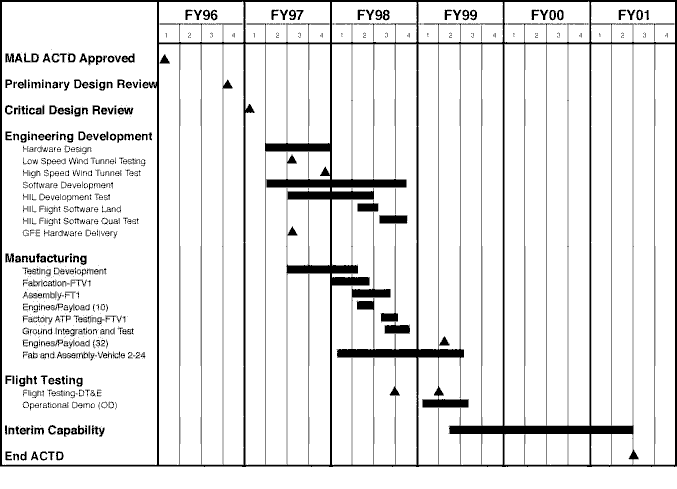







FUSELAGE:
LENGTH 89.6 IN.
DIAMETER 6 IN.
WING:
AREA .90 SQ.FT.
ASPECT RATIO 5
SPAN 25.4 IN.
HORIZ STABILIZER:
AREA (PROJ.) .32 SQ.FT.
ASPECT RATIO 3.23 VERT.
|
VERTICAL FIN: AREA .26 SQ.FT. ASPECT RATIO 2.36 POWER PLANT: TURBOJET ENGINE 50 LB S.L.S. THRUST WEIGHTS: EMPTY (NO FUEL) 65 LBS. LAUNCH 89 LBS. |




